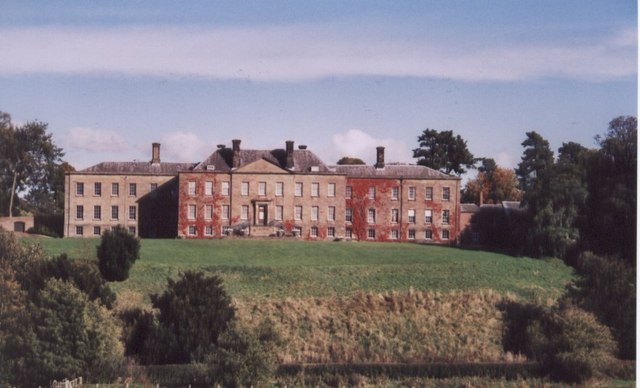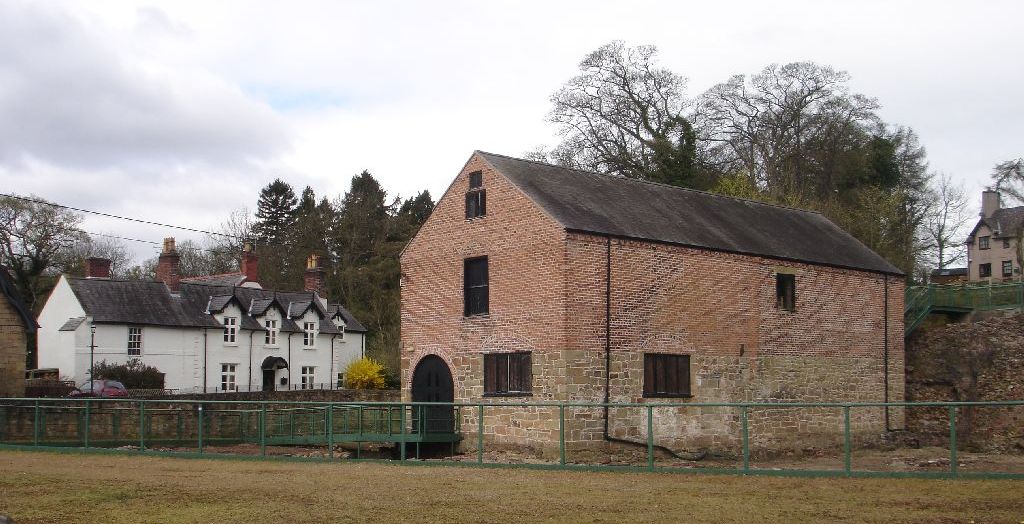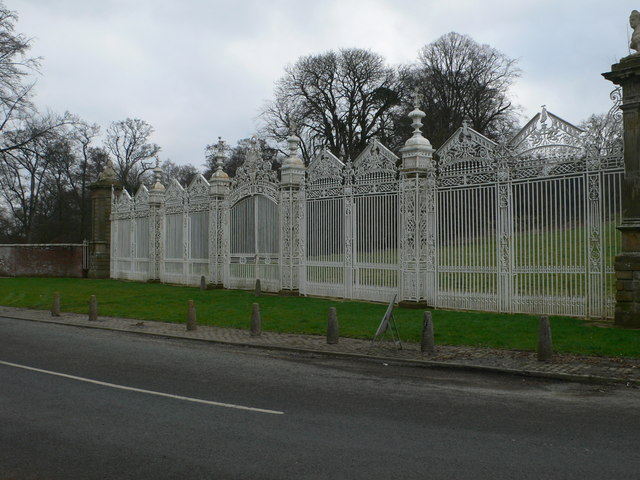|
Bersham
Bersham ( cy, Y Bers) is a village in Wrexham County Borough, Wales, that lies next to the River Clywedog, and is in the community of Esclusham. Bersham was historically a major industrial centre of the area, but despite this the village still retains a rural feeling. Historical significance The village holds special importance for economic historians, for not only did it house the workshops of the skilled Davies brothers, it was one of the cradles of the Industrial Revolution. This is the place where British iron making began in 1670, where smelting iron ore with coke began in 1721, and where John Wilkinson, the 'Iron Mad' pioneer of the Industrial Revolution, set up shop in 1761. For many years the area was one of the most important iron manufacturing centres in the world. The Bersham Ironworks Museum tells the story of the man who bored cannon for the American War of Independence and cylinders for James Watt's revolutionary steam engine that changed the face of the wor ... [...More Info...] [...Related Items...] OR: [Wikipedia] [Google] [Baidu] |
Wrexham (county Borough)
Wrexham County Borough ( cy, Bwrdeistref Sirol Wrecsam) is a county borough, with city status, in the north-east of Wales. It borders England to the east and south-east, Powys to the south-west, Denbighshire to the west and Flintshire to the north-west. The county borough has a population of 136,055. The city of Wrexham is its largest settlement, which together with villages such as Gwersyllt, New Broughton, Bradley and Rhostyllen form a built-up area with 65,692 residents. Villages in the county borough also include Ruabon, Rhosllanerchrugog, Johnstown, Acrefair, Bangor-on-Dee, and Coedpoeth amongst others. The county borough has two outlying towns, Chirk and Holt, and various rural settlements in the county borough's large salient in the Ceiriog Valley, and the English Maelor. The area has strong links with traditional industries such as coal-mining and brewing, although modern manufacturing has since succeeded those former industries. The county borough was form ... [...More Info...] [...Related Items...] OR: [Wikipedia] [Google] [Baidu] |
Wrexham County Borough
Wrexham County Borough ( cy, Bwrdeistref Sirol Wrecsam) is a county borough, with city status, in the north-east of Wales. It borders England to the east and south-east, Powys to the south-west, Denbighshire to the west and Flintshire to the north-west. The county borough has a population of 136,055. The city of Wrexham is its largest settlement, which together with villages such as Gwersyllt, New Broughton, Bradley and Rhostyllen form a built-up area with 65,692 residents. Villages in the county borough also include Ruabon, Rhosllanerchrugog, Johnstown, Acrefair, Bangor-on-Dee, and Coedpoeth amongst others. The county borough has two outlying towns, Chirk and Holt, and various rural settlements in the county borough's large salient in the Ceiriog Valley, and the English Maelor. The area has strong links with traditional industries such as coal-mining and brewing, although modern manufacturing has since succeeded those former industries. The county borough was for ... [...More Info...] [...Related Items...] OR: [Wikipedia] [Google] [Baidu] |
Bersham Colliery
Bersham Colliery was a large coal mine located near Rhostyllen in Wrexham County Borough, Wales. The mine accessed seams found in the Denbighshire Coalfield. History The Wrexham area in the 19th Century was highly industrialised. At the peak there were 38 different collieries operating in the area, each producing coal totalling over 2.5 million tonnes annually to the numerous brickworks and steelworks in the area, including Brymbo Steel Works and Shotton Steel Works. 19th century When the colliery first opened it was named Glan-yr-Afon ( en, Riverside) Colliery. Operated by Bersham Coal Company, the first shaft was sunk in 1864 on the site of a brickworks immediately adjacent to the Shrewsbury to Chester railway line, however due to difficulties the pit did not reach the main coal seams and the site was left abandoned until 1871 when the pit was deepened by new owners, the Barnes family of Liverpool; coal production started in 1874 with two shafts; No.1 at a diameter of 10 fe ... [...More Info...] [...Related Items...] OR: [Wikipedia] [Google] [Baidu] |
Bersham Ironworks
Bersham Ironworks were large ironworks at Bersham, near Wrexham, Wales. They are most famous for being the original working site of John Wilkinson. They were also the first site in the world to use a new way of boring holes in cannon and steam engine cylinders. History Ironworking began at Bersham around 1640, and evidence shows that the cannon for the Royalists in the English Civil War were made there. In the 18th century, Isaac Wilkinson bought the ironworks and ran it for a considerable number of years. The main product was cannon, although the process to make them in iron was difficult, and cannonballs often became stuck in the barrel, leading to explosions. When Isaac's son John Wilkinson took over, he employed a boring machine to accurately make a smooth bore cannon, which became so popular that cannons produced using this technique were used in the American War of Independence and the Napoleonic wars. As well as cannon, the smooth bore machine could make cylinders fo ... [...More Info...] [...Related Items...] OR: [Wikipedia] [Google] [Baidu] |
John Wilkinson (industrialist)
John "Iron-Mad" Wilkinson (1728 – 14 July 1808) was an English industrialist who pioneered the manufacture of cast iron and the use of cast-iron goods during the Industrial Revolution. He was the inventor of a precision boring machine that could bore cast iron cylinders, such as cannon barrels and piston cylinders used in the steam engines of James Watt. His boring machine has been called the first machine tool. He also developed a blowing device for blast furnaces that allowed higher temperatures, increasing their efficiency, and helped sponsor the first iron bridge in Coalbrookdale. He is notable for his method of cannon boring, his techniques at casting iron and his work with the government of France to establish a cannon foundry. Biography Early life John Wilkinson was born in Little Clifton, Bridgefoot, Cumberland (now part of Cumbria), the eldest son of Isaac Wilkinson and Mary Johnson. Isaac was then the potfounder at the blast furnace there, one of the first to u ... [...More Info...] [...Related Items...] OR: [Wikipedia] [Google] [Baidu] |
Clywedog Trail
The Clywedog Trail is a footpath close to Wrexham in Wales. Starting at the Minera Lead Mines and running to King's Mills it follows the course of the River Clywedog. It is a haven for walking, relaxation and enjoying the peace of the wildlife. It is said that the Clywedog Valley was the Silicon Valley of the 18th century, as it was there that British ironmaking began in 1670, smelting iron ore with coke began in 1721 and John Wilkinson set up shop in 1761. For many years the area was one of the most important iron manufacturing centres in the world. Sights Sights passed include: * Minera Lead Mines * Nant Mill * Plas Power Church *Offa's Dyke and Plas Power Woods *Bersham Ironworks *Bersham *Erddig Erddig Hall ( cy, Neuadd Erddig; or simply Erddig; ) is a Grade-I listed National Trust property in Wrexham, Wales. Standing south of Wrexham city centre, it comprises a country house built during the 17th and 18th centuries amidst a 1,900 ... *King's Mills Exter ... [...More Info...] [...Related Items...] OR: [Wikipedia] [Google] [Baidu] |
Esclusham
Esclusham ( cy, Esclus or ''Esclys'') is a community and electoral ward in Wrexham County Borough, Wales. The community includes the villages of Bersham, Rhostyllen, Aberoer, Llwyneinion and Pentre Bychan, as well as a number of smaller settlements, the park at Erddig, and an area of the Ruabon Moors west of Aber-oer known as Esclusham Mountain. The population of the community at the 2011 Census was 3,515. History The name is recorded as Esclesham or Esclusham as early as 1315, likely originating in a combination of the Old English personal name ''Æscel'' with ''ham'', "settlement"; the name is locally pronounced with stress on the second (middle) syllable, probably due to the influence of Welsh language stress patterns.''Nomina'', v. 11-13, 1987, 102 The old township of Esclusham, within the manor of Esclusham, was part of the historic Marcher Lordship of Bromfield and Yale. The ''Survey'' of topographer John Norden, carried out in 1620 within Bromfield and Yale, defi ... [...More Info...] [...Related Items...] OR: [Wikipedia] [Google] [Baidu] |
River Clywedog
The River Clywedog is a river in Wrexham County Borough, Wales. Its uses have been watering crops, powering industrial machinery but is now used as walking trails or geography trips. The river originates to the west of Wrexham, and joins the River Dee some four miles south east of the city. Course of the river The river Clywedog rises in the hills west of the village of Minera. After flowing through Minera it turns south-east, past Coedpoeth, Bersham and Rhostyllen and through the Erddig Country Park, then east, passing slightly to the south of Wrexham. There is a path along the entire river bank from Minera to Wrexham. After passing the Wrexham industrial estate, the river joins the River Dee near the English/Welsh border. History During the 18th and early 19th centuries there were 17 watermills along the river: fulling mills for preparing cloth, mills for grinding corn and malt, and paper mills. Large waterwheels powered the bellows blasting air into the iron furnaces ... [...More Info...] [...Related Items...] OR: [Wikipedia] [Google] [Baidu] |
Davies Brothers Of Wrexham
The Davies brothers of Bersham, near Wrexham in north Wales, were a family of smiths active in the 18th century. They were particularly known for their high-quality work in wrought iron, of which several examples still survive in country homes and churchyards around the England-Wales border. Biography The family consisted of Hugh or Huw Davies (d. 1702) and his sons Robert (1675–1748) and John (1682–1755), who would both go on to be highly regarded smiths; there were also another two sons, Huw and Thomas, and six daughters, Anne, Magdalen, Jane, Sarah, Elinor, and Margaret.Davies family of Bersham Welsh Biography Online They worked at the Croes Foel forge in , near Wrexham. Robert – generally conside ... [...More Info...] [...Related Items...] OR: [Wikipedia] [Google] [Baidu] |
Erddig
Erddig Hall ( cy, Neuadd Erddig; or simply Erddig; ) is a Grade-I listed National Trust property in Wrexham, Wales. Standing south of Wrexham city centre, it comprises a country house built during the 17th and 18th centuries amidst a 1,900 acre estate, which includes a 1,200-acre landscaped pleasure park and the earthworks of a Norman motte-and-bailey castle. Erddig has been described as 'the most evocative Upstairs Downstairs house in Britain' due to the well-rounded view it presents of the lifestyles of all of its occupants, both family and staff. The eccentric Yorke family had an unusual relationship with their staff and celebrated their servants in a large and unique collection of portraits and poems. This collection, coupled with well-preserved servants' rooms and an authentic laundry, bakehouse, sawmill, and smithy, provide an insight into how 18th to 20th century servants lived. The state rooms contain fine furniture, textiles and wallpapers and the fully restored wa ... [...More Info...] [...Related Items...] OR: [Wikipedia] [Google] [Baidu] |
Denbighshire Coalfield
The Denbighshire Coalfield in the historic county of Denbighshire in north-east Wales is one of the smaller British coalfields. It extends from near Caergwrle in the north, southwards through Wrexham, Ruabon and Rhosllannerchrugog to Chirk in the south. A small part extends into Shropshire around Oswestry. Beyond Caergwrle the coal-bearing strata continue northwards as the Flintshire Coalfield. Together the two coalfields are known as the North Wales Coalfield. History The shallower parts of the Denbighshire Coalfield were worked extensively in the early nineteenth century, most of the coal being used in the iron industry. In the mid-nineteenth century, much deeper pits were established and a network of railways was built in the Wrexham area to transport the coal. A report on the North Wales Coalfield in the 1950s found that the reserves of coal were running low and that in the Denbighshire Coalfield, the geology of the coal-bearing strata dipped rapidly rendering it unlikely tha ... [...More Info...] [...Related Items...] OR: [Wikipedia] [Google] [Baidu] |
Clwyd
Clwyd () is a preserved county of Wales, situated in the north-east corner of the country; it is named after the River Clwyd, which runs through the area. To the north lies the Irish Sea, with the English ceremonial counties of Cheshire to the east and Shropshire to the south-east. Powys and Gwynedd lie to the south and west respectively. Clwyd also shares a maritime boundary with Merseyside along the River Dee. Between 1974 and 1996, a slightly different area had a county council, with local government functions shared with six district councils. In 1996, Clwyd was abolished, and the new principal areas of Conwy County Borough, Denbighshire, Flintshire and Wrexham County Borough were created; under this reorganisation, "Clwyd" became a preserved county, with the name being retained for certain ceremonial functions. This area of north-eastern Wales has been settled since prehistoric times; the Romans built a fort beside a ford on the River Conwy, and the Normans and Wel ... [...More Info...] [...Related Items...] OR: [Wikipedia] [Google] [Baidu] |








